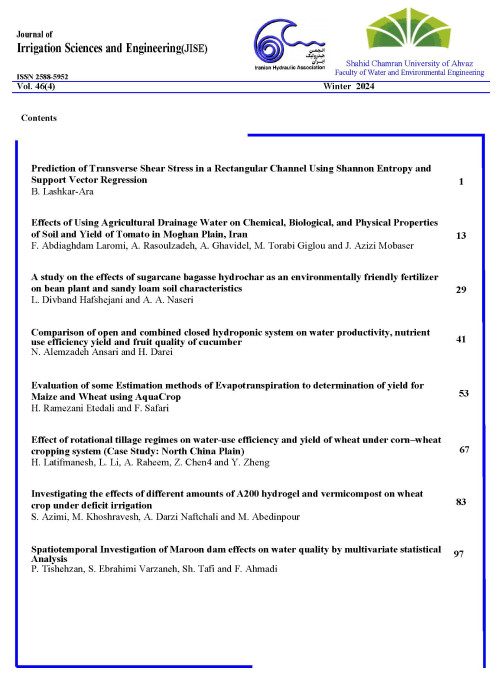Evaluation of Effects of Wave Breaking and Bed Friction Factors On The Propagation Pattern of Wind Induced Waves In Near Shore Fields (Lengeh Port Case Study)
Author(s):
Abstract:
Waves are one of the most important parameters for designing marine and coastal structures. It is required to analyze design waves for designing coastal structures. One of the most important parameters which affect wave propagation pattern and design wave is calibration coefficient. It is vital to provide accurate and proper calibration factors. The main goal of present research is performing sensitivity analysis on wave breaking and bottom friction coefficients and evaluating their effects on wave propagation pattern and also design waves with different return periods. Considering previous experiences which have been gained from research and analytical projects that have been performed to model hydrodynamic phenomenon of coastal zones, Mike 21-SW module is chosen in this thesis to model and analyze wave characteristics. Time series of height, period and mean direction of incoming waves are considered as boundary conditions. These time series are extracted from ISWM wave data. Regarding modeling and forecasting of design waves in strategic region of Persian Gulf and importance of Iranian southern ports, coastal region of Lengeh port is selected for modeling wave propagation to analyze wave propagation pattern and effects of wave breaking and bottom factors on design waves. Results of present study showed that bottom friction factor has more considerable effects on wave propagation and wave diffraction pattern in comparison with wave breaking factor. Variations of bottom friction factor can change wave propagation pattern of local models. Additionally this factor has considerable effects on increasing or decreasing of design waves. In contrast to this factor, lower values of wave breaking factor (less than 0.8) can affect design wave height. Therefore sensitivity of wave propagation model to bottom friction factor is more considerable than wave breaking factor and then it is recommended that for calibrating wave propagation model and achieving results which are closed to field measurements, in the first step bottom friction factor would be studied.
Keywords:
Language:
Persian
Published:
Irrigation Sciences and Engineering, Volume:39 Issue: 4, 2017
Pages:
133 to 145
magiran.com/p1629765
دانلود و مطالعه متن این مقاله با یکی از روشهای زیر امکان پذیر است:
اشتراک شخصی
با عضویت و پرداخت آنلاین حق اشتراک یکساله به مبلغ 1,390,000ريال میتوانید 70 عنوان مطلب دانلود کنید!
اشتراک سازمانی
به کتابخانه دانشگاه یا محل کار خود پیشنهاد کنید تا اشتراک سازمانی این پایگاه را برای دسترسی نامحدود همه کاربران به متن مطالب تهیه نمایند!
توجه!
- حق عضویت دریافتی صرف حمایت از نشریات عضو و نگهداری، تکمیل و توسعه مگیران میشود.
- پرداخت حق اشتراک و دانلود مقالات اجازه بازنشر آن در سایر رسانههای چاپی و دیجیتال را به کاربر نمیدهد.
In order to view content subscription is required
Personal subscription
Subscribe magiran.com for 70 € euros via PayPal and download 70 articles during a year.
Organization subscription
Please contact us to subscribe your university or library for unlimited access!


